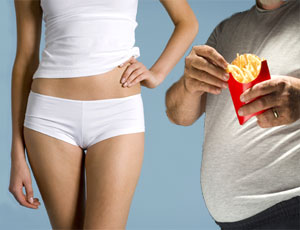It was and still our biggest weakness of our emotional history and sweetest smelling and tasting memory. I found this latest research which I would highly recommend you to read it because it inlight us how to be careful not to lead our kids into weight gain over the years. I will put the article as it is:
"Eating more potato chips and French fries is likely to lead to a bigger weight gain over the years than the weight change associated with eating more of other foods, new research indicates.
The study, from the New England Journal of Medicine, stands out because it quantifies how much weight a person is likely to gain or lose over four years based on one additional daily serving of a range of specific foods. Eating more potatoes correlated with a gain of 1.28 pounds, with French fries in particular associated with a 3.35-pound gain.
There isn't much comprehensive research into specific diet and lifestyle factors behind the creeping weight gain—about a pound a year—the average adult experiences.
The authors say their study points to a different kind of dietary advice for avoiding extra pounds associated with aging. "This suggests that the path to eating fewer calories is not simply to count calories, but to focus on consuming a more healthy diet in general," the study's lead author, Dariush Mozaffarian, associate professor in the department of epidemiology at the Harvard School of Public Health, said in an email.
The Harvard researchers looked at three separate long-term studies covering 120,877 women and men who weren't obese and who were healthy when the studies began. (They were mostly white, educated and in the U.S.) Scientists analyzed periodic lifestyle and diet questionnaires the participants filled out over the years and identified items associated with weight gain or loss.
This type of study can't definitively say that certain foods cause weight changes. But it found one additional daily serving of potato chips was associated with a 1.69-pound gain; sugary drinks, processed meat and red meat were associated with about a one-pound gain. Eating more fruits and vegetables, nuts, whole grains and yogurt correlated with slight weight loss over four years. Big jumps in physical activity were associated with smaller weight gains, and increased TV-viewing with bigger gains.
Marion Nestle, New York University professor of nutrition and public health, expressed surprise that potato products were linked with more weight gain than desserts like cake, cookies and doughnuts, which contribute the most calories to the American diet, other research shows. She says she suspects people who eat potato chips and fries also tend to eat too much in general, making these foods markers for a diet leading to weight gain.
In a statement, the American Beverage Association said that the industry is committed to anti-obesity efforts, noting several other foods were associated with bigger weight gains than sugar-sweetened drinks. The National Potato Council was unavailable for comment. A Frito-Lay spokesman had no comment.
—Shalini Ramachandran contributed to this article.
One additional daily serving of potato chips was associated with a 1.69-pound gain.
